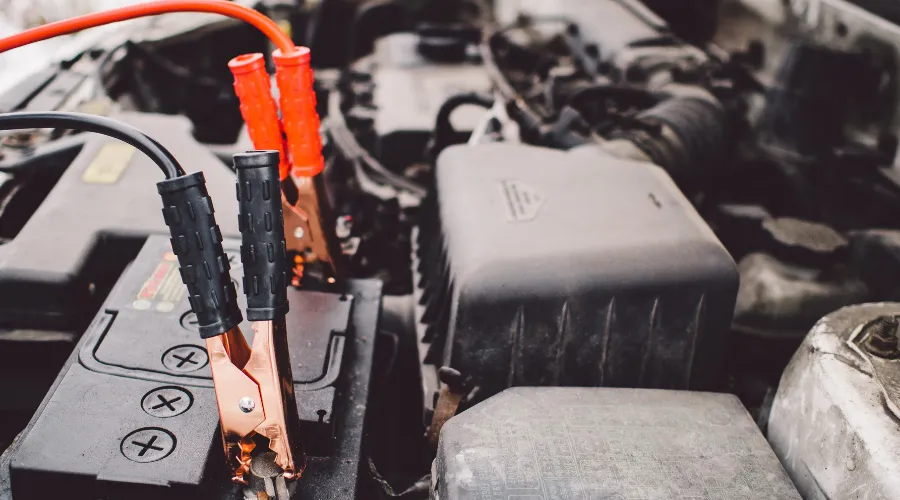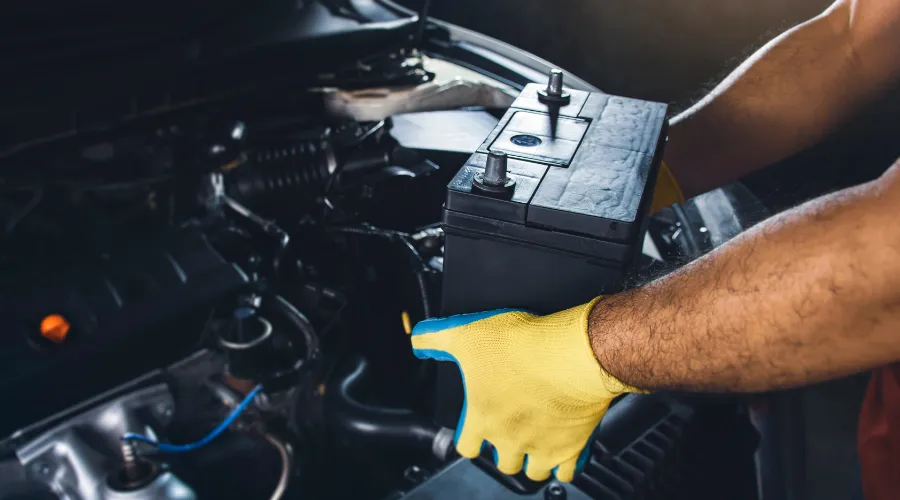How to Extend the Life of Your Car Battery

Anúncios
Your car battery is the unsung hero of your vehicle—until it dies unexpectedly.
Unlike other components that wear out gradually, a failing battery often leaves you stranded without warning.
The good news? With proper care, you can significantly prolong its lifespan.
Anúncios
By understanding the factors that affect battery life, you can take proactive measures to avoid premature failure.
Regular maintenance and mindful driving habits can make all the difference in ensuring your battery runs smoothly for years to come.
According to a study by AAA, the average car battery lasts 3-5 years, but extreme temperatures, frequent short trips, and poor maintenance can cut that short.
The key to longevity lies in understanding how batteries degrade and adopting proactive habits.
Implementing these tips not only saves you money but also enhances your vehicle’s overall performance.
Moreover, knowing the signs of battery distress can help you act before a dead battery leaves you stranded.
+ How to Save on Car Maintenance Without Compromising Quality
Why Do Car Batteries Fail Prematurely?
Most drivers blame cold weather, but heat is actually the bigger enemy.
High temperatures accelerate chemical reactions inside the battery, leading to fluid evaporation and internal corrosion.
Other culprits include:
- Parasitic drain (electronics drawing power when the car is off)
- Undercharging (frequent short drives prevent full recharge)
- Vibration damage (loose mounting weakens internal components)
Let’s break down the best strategies to combat these issues.
Understanding these factors can help you make informed decisions about battery care and maintenance.
By addressing these common problems, you can significantly extend the lifespan of your battery and avoid unexpected failures.
Additionally, being aware of the signs of battery distress can help you intervene before it’s too late.
Regularly checking your battery’s health can save you from inconvenient breakdowns and costly repairs.
1. Drive Longer, Not Just More Often
Frequent five-minute grocery runs might keep your engine warm, but they’re a death sentence for your car battery.
Alternators need time to replenish the charge lost during ignition.
If most of your trips are under 15 minutes, consider:
- Combining errands to extend driving time
- Investing in a trickle charger if the car sits unused for weeks
Table 1: How Driving Habits Affect Battery Health
| Driving Pattern | Impact on Battery |
|---|---|
| Short, frequent trips | Prevents full recharge |
| Long highway drives | Maintains optimal charge levels |
| Infrequent use | Leads to sulfation (capacity loss) |
In addition to combining errands, planning longer trips can help maintain optimal battery health.
Consider taking scenic drives or longer routes whenever possible to keep your battery charged.
Furthermore, using public transport or carpooling for shorter trips can also reduce the strain on your battery.
By being mindful of your driving habits, you can help ensure that your battery remains in top condition.

2. Keep It Clean and Secure
Corrosion on terminals is like clogged arteries—it restricts electrical flow.
A mix of baking soda and water can neutralize acid buildup, but prevention is better:
- Apply anti-corrosion grease after cleaning
- Check mounting brackets to reduce vibration damage
A loose battery bounces around, causing internal fractures.
Tighten the hold-down clamp to prevent premature failure.
Regularly inspecting your battery for cleanliness and secure mounting can prevent many common issues.
Additionally, maintaining a clean environment around your battery can help reduce the risk of corrosion and extend its life.
Using protective covers or battery cases can also shield your battery from dirt and moisture, which can contribute to corrosion.
Being proactive about cleanliness will not only enhance battery performance but also improve overall vehicle safety.
3. Test and Monitor Voltage Regularly
Waiting for a dead battery is like ignoring a check engine light—it’s a gamble.
Use a multimeter to check voltage monthly:
- 12.6V or higher: Fully charged
- 12.4V: Needs a recharge
- Below 12.2V: Risk of sulfation
++ How to Wash Your Car Properly Without Scratching the Paint
Table 2: Voltage States and Battery Health
| Voltage Reading | Battery Status | Action Needed |
|---|---|---|
| 12.6V+ | Optimal | None |
| 12.4V | Partially discharged | Recharge soon |
| 11.9V or lower | Severely depleted | Immediate recharge/replace |
Regular voltage checks can help you catch potential issues before they become a problem.
By monitoring your battery’s health, you can ensure that it remains in optimal condition and avoid unexpected failures.
Consider keeping a log of your voltage readings to track any changes over time.
This documentation can help you identify patterns and make informed decisions about when to replace your battery.

4. Shield It from Extreme Temperatures
Parking in a garage during winter helps, but summer heat is stealthier.
If you live in a hot climate:
- Use a thermal blanket to insulate the battery
- Park in shade whenever possible
Cold cranking amps (CCA) drop in freezing weather, making the engine harder to start.
A battery maintainer can offset this.
Consider investing in a quality battery cover or insulation to protect against extreme temperatures.
This small investment can greatly enhance your battery’s performance and longevity.
Additionally, using reflective sun shades in your windshield can help keep your car’s interior cooler, indirectly benefiting your battery.
Being proactive about temperature control can save you from costly battery replacements down the line.
For more tips on car maintenance and battery care, check out AutoZone.
5. Upgrade Wisely
Not all car batteries are equal.
If you frequently face extreme conditions, opt for:
- AGM (Absorbent Glass Mat) batteries: Better vibration resistance
- Deep-cycle batteries: Ideal for stop-start systems
Choosing the right battery for your driving conditions can make a significant difference in performance and lifespan.
Researching and selecting a battery that meets your specific needs will pay off in the long run.
Consider consulting with a professional or doing thorough research online to find the best options available.
Keeping abreast of advancements in battery technology can also help you make informed choices for future upgrades.
Final Thought: Prevention Over Panic
A car battery doesn’t die—it’s murdered by neglect.
Simple habits, like monthly voltage checks and longer drives, can add years to its life.
Invest 10 minutes today to avoid a costly tow tomorrow.
By adopting these strategies, you’re not just maintaining a component—you’re ensuring reliability.
After all, the best battery is the one you never have to think about.
